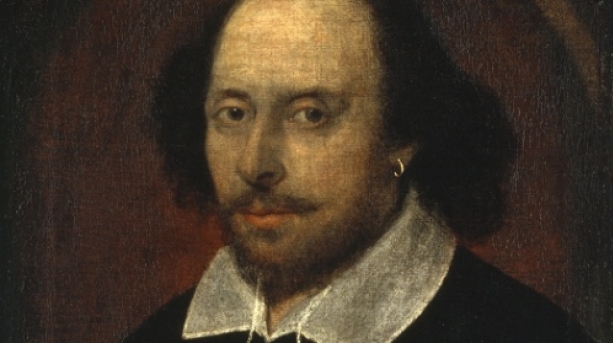Anaya Sriram examines to what extent Shakespeare represents LGBTQ+ characters within his plays.
If you ask anyone to name an iconic straight love story, the first one that springs to mind is usually Romeo and Juliet. Last week saw Valentines’ Day and as a result the same, overused quotes on every card: “Shall I compare thee to a summer’s day”, “If music be the food of love, play on” and so on. Shakespeare occupies such a prestigious position in our literary canon that his work has undeniably influenced the way in which we see love stories; from the star-crossed lovers trope in Romeo and Juliet to the sexual confusion in A Midsummer Night’s Dream and Twelfth Night, all laying the groundwork for so many of our favourite romantic comedies today (think She’s the Man, Ten Things I Hate About You, etc.). However, mainstream media’s tendency to view Shakespeare as the epitome of heterosexual romance is both dangerous and limiting. There is plenty of evidence within Shakespeare’s plays to point to LGBT+ readings of certain characters, and the possibilities for reimagining the plays with LGBT+ leads are endless. There is so much left to be explored within Shakespeare that setting these plays within a heteronormative context simply limits their potential.
Many critical responses to Shakespeare have suggested that he himself may be gay, and when you consider the context in which he was writing, LGBTQ+ readings of Shakespeare gain credence. Among a cycle of 154 sonnets, 126 were addressed to a man, ‘Mr WH’, who many believe to be the ‘Fair Youth’ to whom some of the most celebrated dedications of love in the English language are addressed. These sonnets underwent a ‘process of heterosexualisation in the Victorian period’ with the pronouns being changed. This reflection of how Victorian sensibilities have concealed many of the more overt elements of homosexuality in Shakespeare’s texts show how much of our understanding of Shakespeare has been influenced by academics and elites of the past. Gregory Doran, artistic director of the RSC, remarked in 2017 that “in the 21st century it’s no longer acceptable to play that as anything other than a homosexual.” With such an influential director holding these progressive views, it is evident that things are changing in the theatre industry, and there will be less and less room for directors to ignore the queer subtext in many of Shakespeare’s plays.

It is also worth remembering that Shakespeare’s plays at the time were all performed by men, with young boys playing the women’s parts, and there is much to suggest that Shakespeare was writing some of his most iconic romantic roles, such as Juliet, for a man. There is much speculation surrounding Shakespeare’s relationship with one of the actors playing Juliet, and it is this which inspired the production of Nick Bagnall’s Romeo and Julius at the Liverpool Everyman. Having the story centre around two men from warring families who fall in love adds a whole new dimension to the play, lending it the opportunity to make a powerful commentary on homophobia within society, and the destructive power of masculinity.
Although several productions have made significant steps forward in reimagining Shakespeare’s iconic plays with LGBT+ protagonists, it seems that there are still certain obstacles that stop them from fully engaging with the implications of doing so. The National Theatre’s production of Twelfth Night, for example, was criticised for simply playing around with gender and not really making any significant point about why it was doing it. This production’s biggest success was undoubtedly the choice to genderswap Malvolio for Malvolia, performed with a captivating sharpness and vulnerability by Tamsin Greig. The decision to portray Malvolia as a closeted, repressed lesbian in love with her employer Olivia allows for an exploration of sexual liberty; Malvolia’s complete turnaround from a Puritanical figure in all-black, sensible culottes into a yellow-stockinged, nipple-tasselled burlesque performer reflects the freedom and joy she feels at the hope that Olivia might return her feelings. Other additions, however, such as the drag club frequented by Antonio and Doon Mackichan’s Feste, seem superfluous. Despite being vibrant, fun additions to the production, the audience is never really quite sure what some scenes are doing there, and it doesn’t seem to be any real message in them beyond the obvious: gender and sexuality are fluid.
Theatre has made enormous strides in LGBT+ representation in recent years, and with more and more mainstream theatres acknowledging the importance of telling LGBT+ stories, it seems that the future is bright. The beauty of Shakespeare lies in its humanity: these are stories that tap into the heart and soul, and evoke emotions that everyone can understand. The importance of being able to identify with such iconic love stories as Romeo and Juliet can never be underestimated, and the potential layers and complexity that LGBT+ can bring to these stories is a gold mine, yet to be fully explored.
Ananya Sriram
(Image courtesy of National Portrait Gallery)

